Fars Province: What to see apart from Shiraz and Persepolis
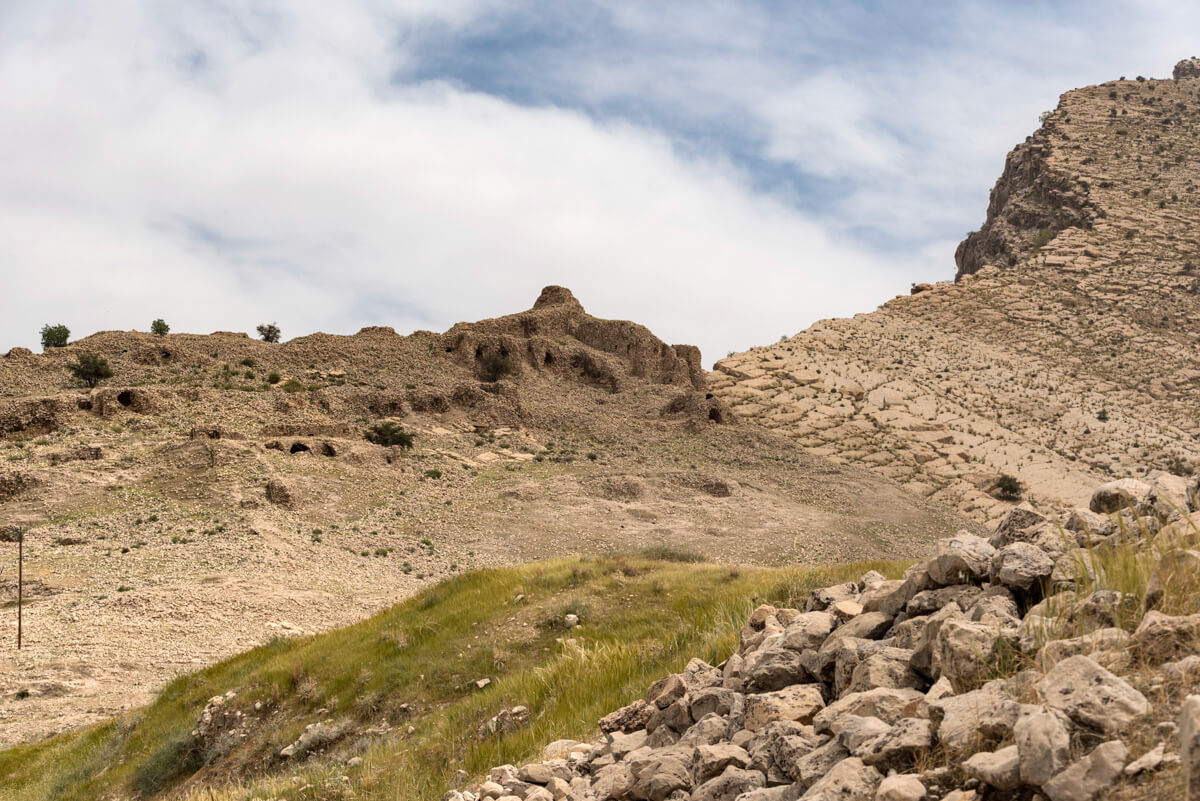
Located in the south of Iran, Fars (or Pars) province is one of the 31 provinces in Iran, the cultural capital of the country and considered the original homeland of the Persian people.
Home to the Zagros mountain range, a remarkable nomadic culture, the strongest historical heritage and the most open-minded city in Iran, Fars province is, perhaps, the region with the most touristic potential in the country, a region which could keep you busy for several weeks.
Unfortunately, most travelers who make it to this remote Persian land just come to visit the city of Shiraz and the historical ruins of Persepolis, without knowing that, here, there is a big bunch of hidden gems which very few travelers know about.
I spent two weeks wandering around here, working with Key2Persia, in order to promote places off the beaten track within Pars province.
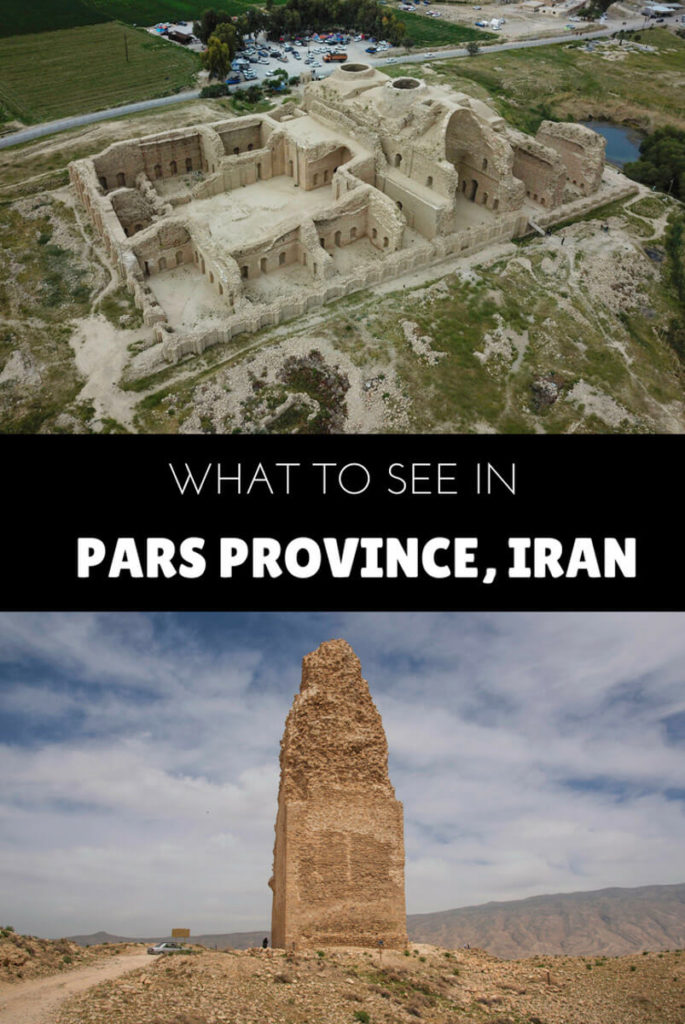
Things to do in Pars Province
It’s mandatory to have a travel insurance to get your visa on arrival in Iran.
Because of the sanctions, most insurance companies don’t provide coverage for Iran, but IATI Insurance does.
Get your exclusive 5% discount if purchasing via this link.
1 – The Sassanid historical heritage
The Sasanid Empire was one of the most powerful empires that ever ruled Persia, ruling for more than 400 years, from 224 to 651 A.D.
Across the empire, they built plenty of palaces, cities, and ridiculously over-sized statues, most of them to show the glory of their power and strength, as the Sasanids are the famous empire that once defeated the Romans when they tried to invade Syria which, at that time, belonged to Persia.
Fars Province is the region where most of their heritage remains and most of the sites are just a couple of hours away from Shiraz.
All of them are nearly 2,000 years old and extremely innovative from an architectural point of view.
The city of Gor
In today’s modern Firouzabad is where the city of Gor stands, an ancient city that dates back to the Achaemenid period but, after Alexander the Great destroyed the city, it was Ardeshir I, the founder of the Sassanid Empire, who rebuilt it.
The city is of huge historical importance, as it was one of the first cities ever built using a circular plan and it was so precise that some famous scholars claimed that he used a compass to build it.
The center of the ruined city is dominated by a 30-meter tower called Terbal, a landmark whose original purpose is unknown, even though some believe that it served as a mere city symbol.

Ardeshir Palace
Just a few kilometers from the city of Gor, Ardeshir I built a stunning palace for himself, not as a defensive structure but just to show his royal power and prestige.
The palace has been beautifully renovated and, perhaps, the most important thing to say about it is that, during its construction, it was the first time ever that someone used domes in the construction of a building.
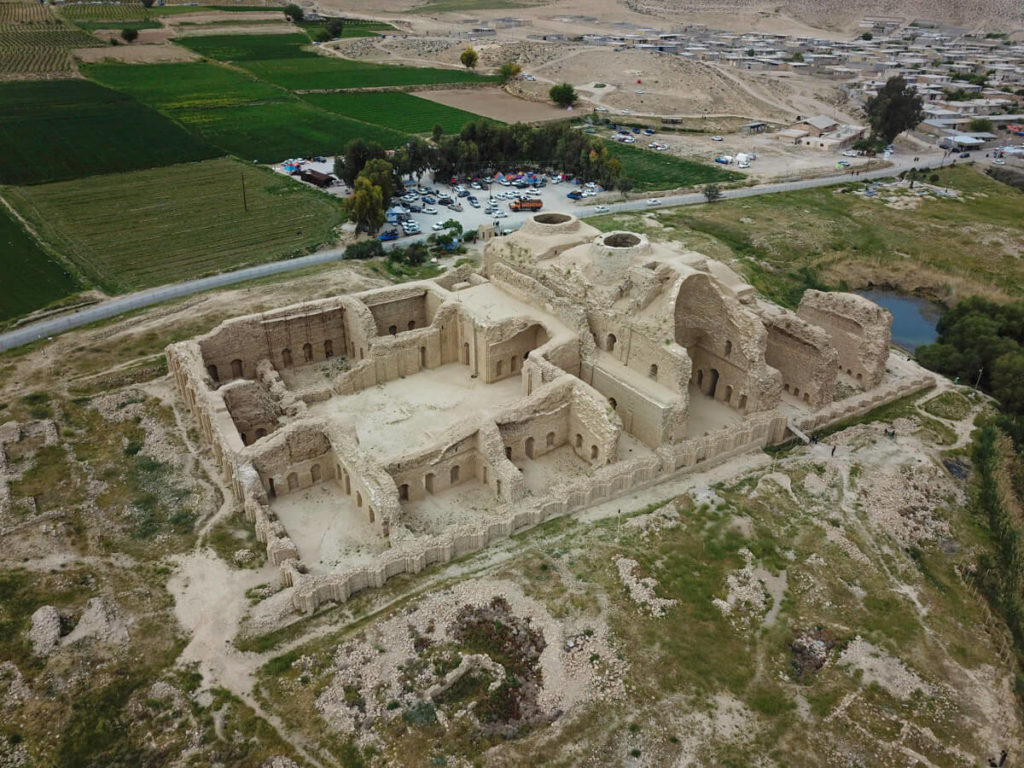
Bishapur
Named after Shapur, the second Sassanid ruler (son of Ardeshir I) and the famous emperor who defeated the Romans, Bishapur holds significant historical importance as, during its construction, it was the first time that both Roman and Persian art and architecture had been combined.
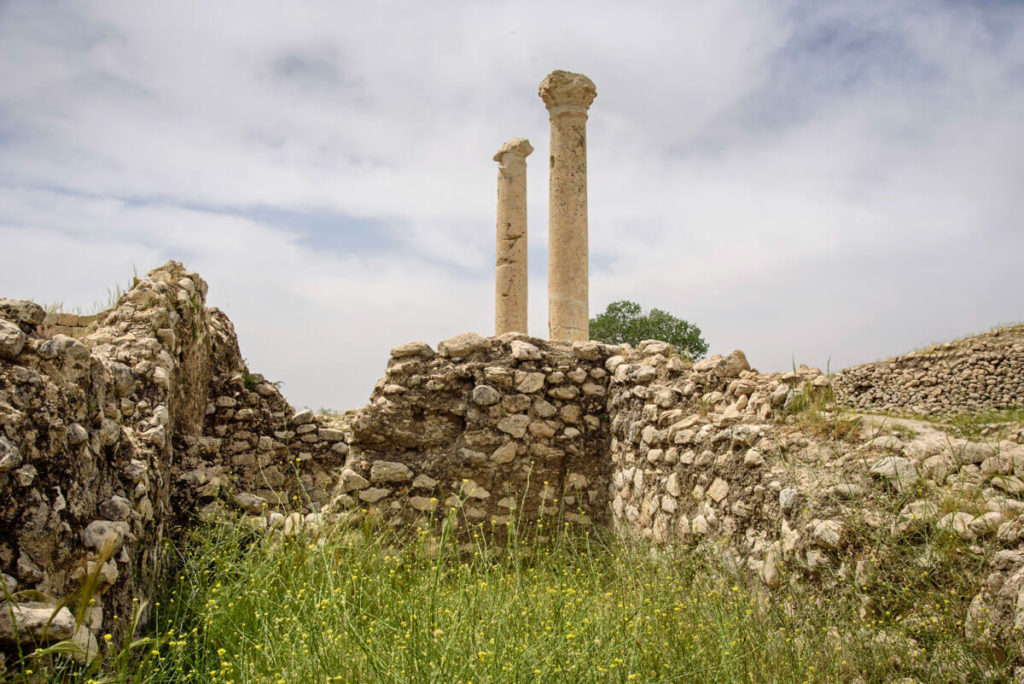
Ghal’e Dokhtar Castle
A fortified castle constructed in a highly strategic position in order to protect the region and the different Sassanid cities, today, this castle is mostly in ruins and, unfortunately, when I went there, it was under renovation, so the place was filled with ugly fences.
However, the castle is located in an epic location from where you can appreciate stunning views.
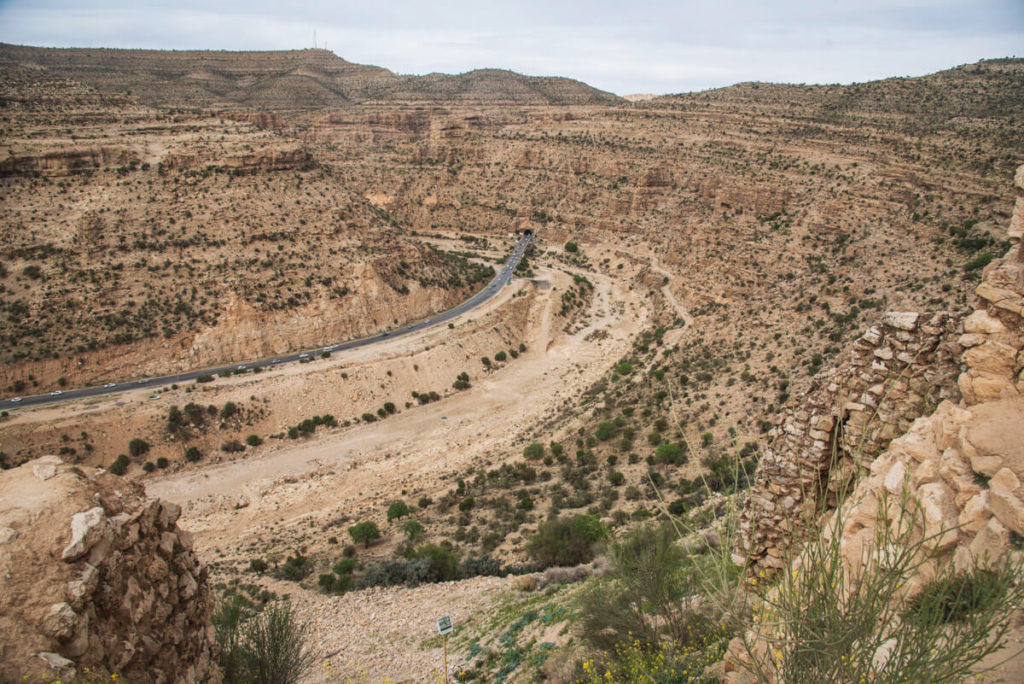
Colossal Statue of Shapur and Carvings
Like I said before, Shapur was a powerful emperor, famous for defeating the Romans in three different battles, including the capture of Valerian, the first Roman emperor to ever become a prisoner of war.
After his victories, Shapur ordered artistic carvings that portrayed his glory, as well as a 35-meter statue of himself inside a cave which is today in perfect condition.
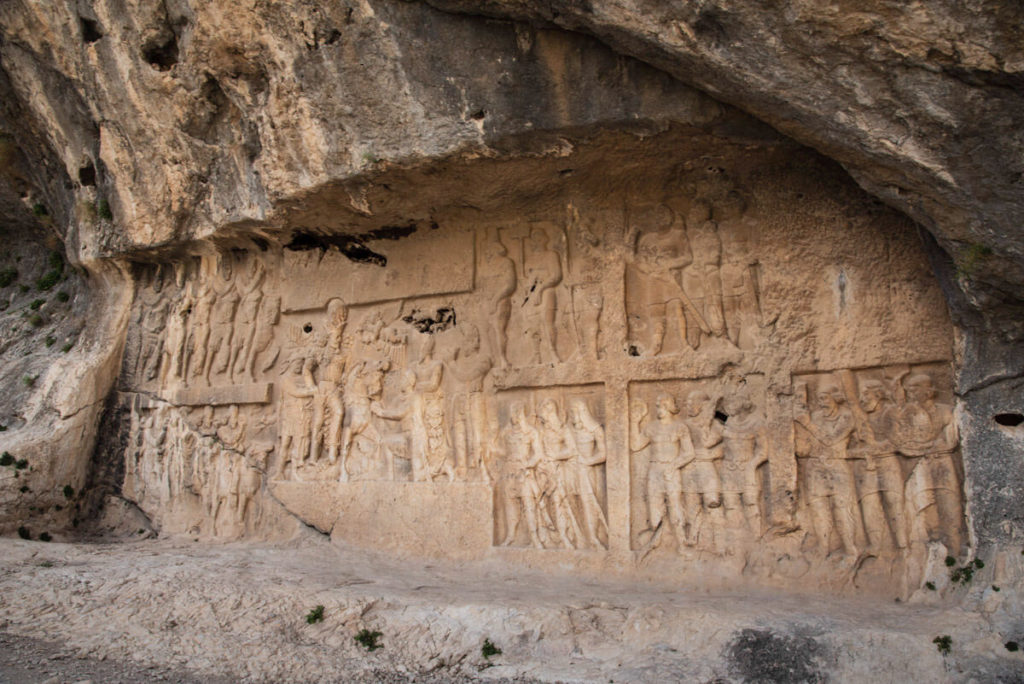
Meeting with Qashqai nomads
Moving with their herds from the Persian Gulf to the mountains close to Esfahan within a 1-year cycle, the Qashqai are a group of nomads from Iran, who have Turkic origins and live a traditional life, not very different from the way their ancestors used to live.
In Iran, I had the opportunity to visit a couple of nomadic camps and also spend one night with one family, where I was able to learn and see their daily routines.
Visiting the nomads is an easy one or two-day trip from Shiraz. For more information, including cultural facts and practical tips, read my post: Qashqai people, authentic nomads of Iran.
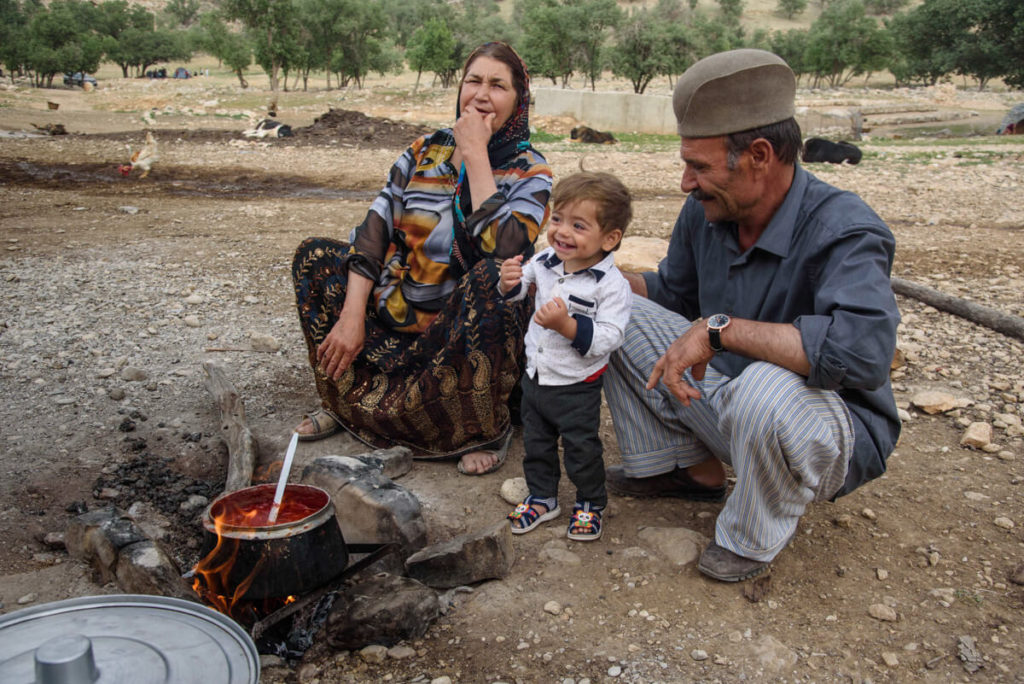
Trekking in the Zagros Mountains
Who would ever say that, in Zagros, a mountain range which is extremely close to the Persian Gulf, one of the most disgustingly hot places in the world, one could find such natural beauty?
The Zagros Mountains stretches for 1,500 kilometers, from north-west to south-west Iran, kind of drawing the border with Iraq.
With an altitude of 4,409 meters above sea level, these mountains offer real trekking opportunities, for both beginners and experienced trekkers.
We spent two days trekking around the area, among rivers, waterfalls and plenty of chicken barbecues.
After so much sightseeing and visiting desert cities, escaping to the mountains can be very rewarding.
The mountains are easily accessible from Shiraz.
Read more: 2-day treks to the Zagros Mountains of Iran
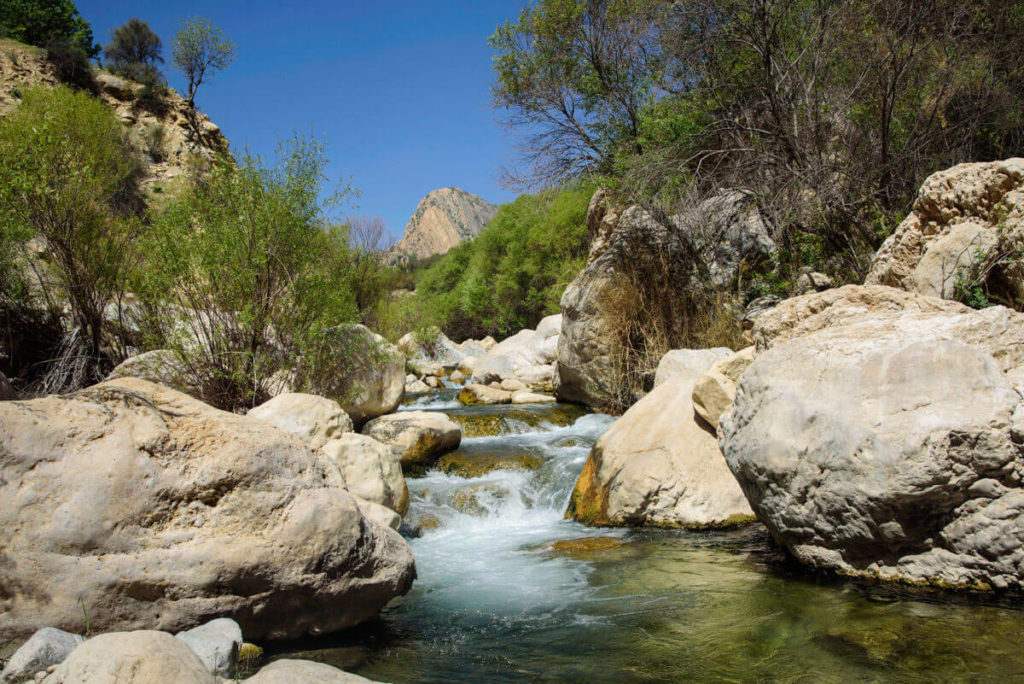
Maharloo Lake (Pink Lake)
A very strange tourist attraction in Iran.
Many Iranians talk about it as if it was something cool.
On the weekend, you will see plenty of locals taking selfies, smiling and having fun.
However, in my eyes, this is a real natural disaster, similar to the Aral Sea in Uzbekistan and Kazakhstan as, basically, it is a lake which has dried out almost completely and become a mini-version of the Dead Sea.
It has become a tourist attraction because some parts of the lake, where there is still water, have become pink due to the color of the sediments that were underneath.
Moreover, this used to be a salty lake, so the dried-out area is covered by a thick layer of salt, giving the impression that is snow.
The lake is around one hour’s drive from Shiraz.
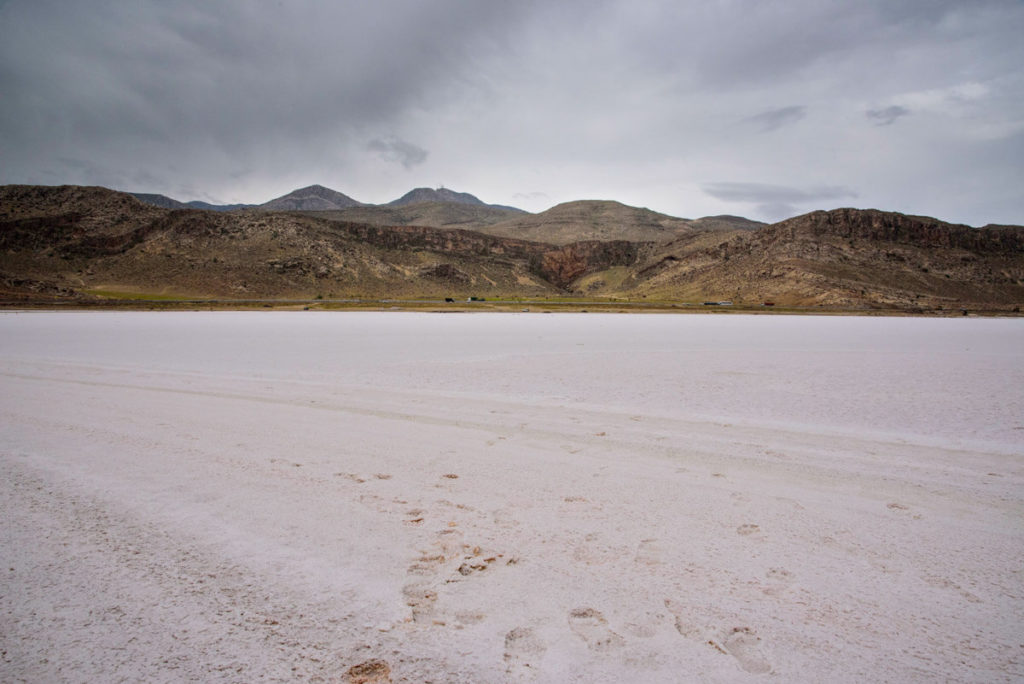
More information for visiting Pars Province
📢 In my Travel Resources Page you can find the list of all the sites and services I use to book hotels, tours, travel insurance and more.
How many days are required – If you have a car, all sites are easily accessible from Shiraz. You could visit the Sassanid historical sites in only one day, but it would be a very long one. Staying with the nomads would require two additional days but you could combine it with a 1-day trek to the mountains of Zagros. The trip to the Pink Lake can easily be done in a couple of hours.
How to visit them – There is no public transportation between these places and, if there was, it would take you ages to visit all of them. The best way to explore the region is by car or taxi and, preferably, with a guide. Key2Persia, an agency based in Shiraz, has very knowledgeable guides that can tell you about the Sassanid Empire’s history, as well as mountaineering experts that can take you for some river trekking.
Don’t forget to check our travel guide to Iran.
As well as all our Iran articles:
- Iran itinerary
- Best Books about Iran
- Travel insurance for Iran
- VPN for Iran
- Solo Female Travel Guide to Iran
- Tehran Travel Guide
- Qeshm Island Travel Guide
- Travel Guide to Shiraz
- A trip to the desert of the Kaluts
- Trekking Guide to Zagros Mountains
- Meeting the Qashqai People
- Darband Travel Guide
- Visa Guide for Iran
- Masouleh Travel Guide
- Travel Guide to Golestan Province
- Iran-Iraq border crossing
- Is Iran Safe?
- Best Hotels in Tehran

One reply on “Fars Province: What to see apart from Shiraz and Persepolis”
Joan I love how you hit off the path spots buddy. Keep on being a pioneer bro!
Ryan